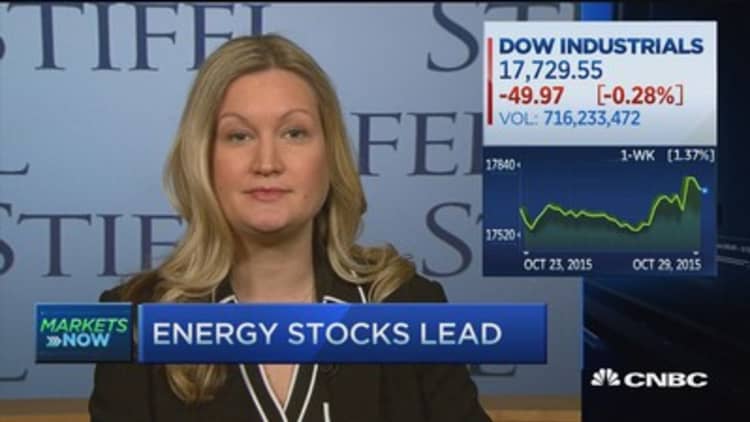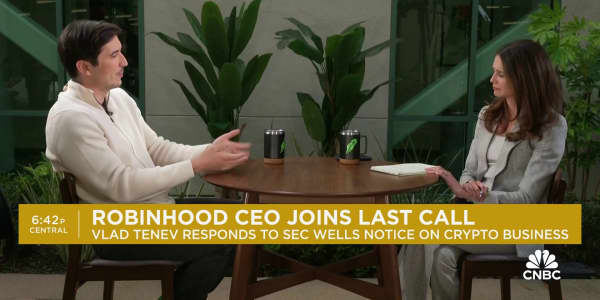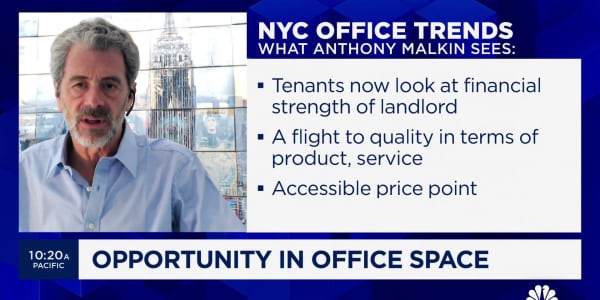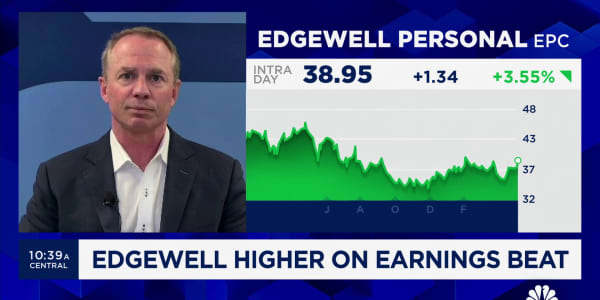
Should the economy show signs of improvement and global conditions do not worsen, the Federal Reserve has indicated it will raise interest rates soon.
The above sentence could have been written after virtually any Federal Open Market Committee meeting over the past year, as officials have been looking for reasons to justify a change in monetary policy.
For whatever reason, the sentiment seems to have taken on greater significance since it was expressed after this week's FOMC gathering.
Read More Fed holds steady; few clues about future rate hike
Perhaps it's because there is only one more meeting left in a year that at one time was almost certain to end with a rate hike, or maybe it really was a few tweaks in the statement issued afterward. In either event, the buzz around Wall Street was that the Fed is leaning strongly toward hiking in December.
Ultimately, though, what may transpire is that markets have just been treated to the latest sleight of hand by a central bank waiting for an ideal time to hike that may never come.
"Knowing that they were not going to raise rates today, the Fed did the right thing by leaving themselves plenty of flexibility to either punt again in December or FINALLY hike if the data nudges them in that direction. If they leaned in any one direction today, they would again have put themselves in a corner," Peter Boockvar, chief market analyst at The Lindsey Group, said in a note after Wednesday's FOMC statement.
Then, writing in all-caps (we'll spare your eyes the strain), Boockvar, who has advocated for a rate increase, implored clients not to read too much into the Fed's latest verbal gymastics: "I do not think the Fed is saying today that they are ready to hike in December. I just believe they left themselves the option to do so if they choose to and are adjusting market expectations for the possibility."
Boockvar concluded, ominously, "All we need is more economic weakness and (a rate hike) won't be happening."
That weakness arrived again Thursday, with a government report showing that gross domestic product grew at just a 1.5 percent pace in the third quarter, a tenth of a point below expectations, with internal data showing decently strong consumer behavior but still anemic levels of business investment.
Read More Inventories hurt GDP, but demand strong
Still, traders went on a hawkish frenzy, boosting chances of a December hike from just 6 percent a month ago to 50 percent Thursday. Where the CME's FedWatch gauge earlier this week had been figuring in no rate hike until at least March, December is now well back in play and the chance for a January move is at 59 percent.
All this from an FOMC statement that held economic growth as simply "moderate," with a "slowed" pace of hiring and inflation that remains well below Fed targets.
While futures traders were pricing in a December increase, gold plunged Thursday and the U.S. dollar fell, events that should not happen in tandem. A hike should trigger a stronger greenback and weaker gold, which traditionally is a hedge against inflation and would fall when rates rise.
"It was one of these where it was yes, no, maybe so, leaving the door maybe open" for a December rate rise, said Quincy Krosby, market strategist at Prudential Financial. "You have to make the assumption that the data coming in between now and then is sufficient for the Fed to move."
Read More This is the big reason the Fed didn't hike rates
Data points, of course, haven't been very cooperative. In addition to the anemic GDP growth, productivity remains muted, the jobs numbers have softened considerably and a report Thursday even brought bad news for the housing market, with pending sales declining 2.3 percent in September, the second straight down month after the August numbers were revised.
Key numbers ahead will be Friday's labor cost index reading and the Nov. 6 release of the nonfarm payrolls report.
For the Fed, the devil remains in the data. If the economy doesn't pick up momentum in the final two months of the year, the central bank won't move, regardless of what the FOMC language tweaks might suggest.
"The FOMC did not have the Q3 data when they met earlier this week. Our best guess is that the data on balance were a bit weaker than what policymakers had assumed," Joseph LaVorgna, chief U.S. economist at Deutsche Bank, said in a note to clients Thursday. "After all, the economy cannot be very healthy when nominal activity is growing at a sub-3 percent pace. Hopefully, this will not go unnoticed by the Fed, which may have lost its window to nudge official interest rates higher."






